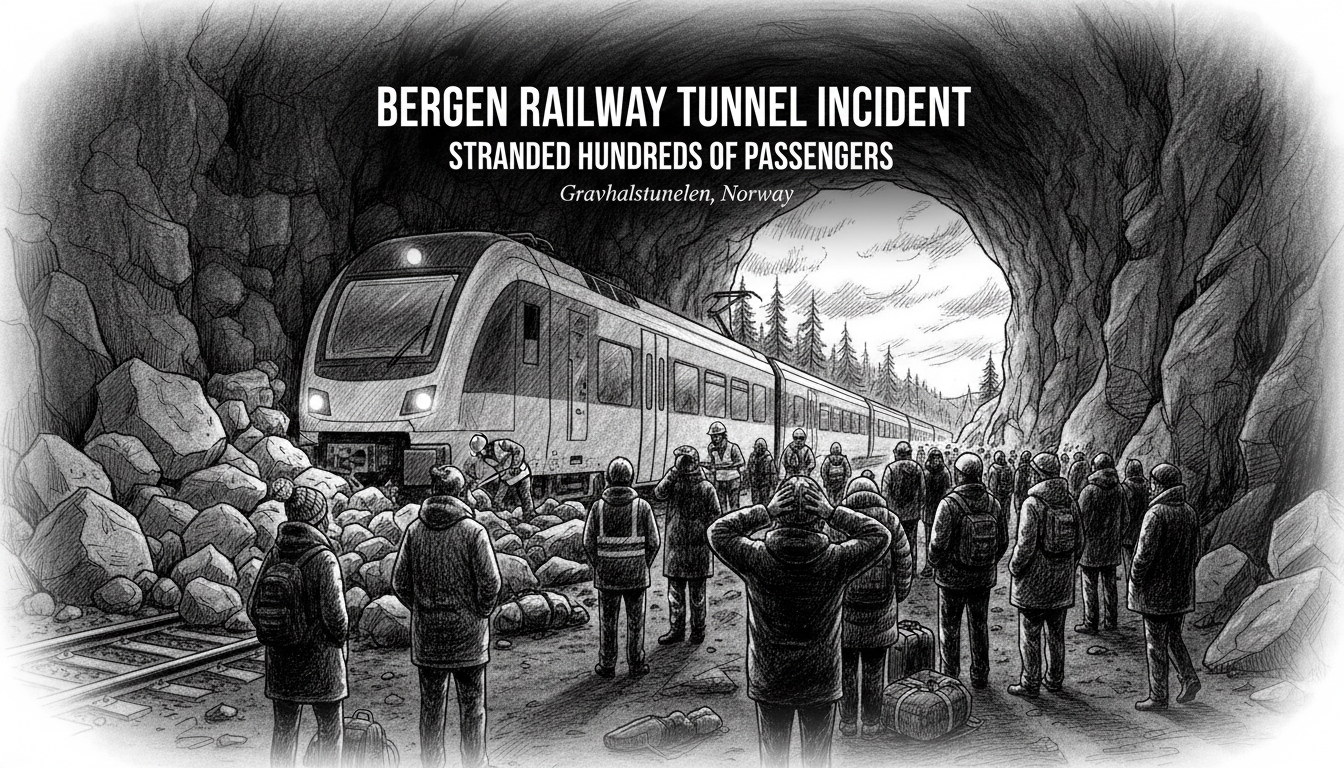A major disruption on Norway's vital Bergen Railway line has left approximately 350 passengers stranded after a train collision with rocks caused a tunnel blockage. The incident occurred in the Gravhalstunnelen in Vestland county, where a passenger train carrying 150 people struck rocks and developed a leak, forcing a complete shutdown of the critical transport artery between Bergen and Oslo.
Vy press spokesperson Kaja Rynning Moen confirmed the train had been traveling from Bergen to Oslo when the accident occurred. Two additional trains became immobilized due to the resulting blockage, including one at Voss station where passengers reported minimal information and extended delays. Passenger Helene Kivle described the situation from Voss station, noting they had been stationary for over thirty minutes despite initial assurances of a brief delay.
Initial repair attempts appeared promising around 7:30 PM when officials reported the leak had been contained. However, subsequent updates revealed persistent problems requiring assistance from Bane Nor maintenance crews. The operational train finally resumed movement toward Myrdal station by 8:30 PM, though the Voss train remained stationary pending safety inspections of the railway section.
This incident highlights the vulnerability of Norway's mountainous rail infrastructure to geological hazards. The Bergen Railway represents one of Northern Europe's most challenging rail routes, traversing harsh terrain where rockfalls pose persistent threats to transportation safety. Such disruptions carry economic implications beyond passenger inconvenience, potentially affecting freight movement and regional connectivity.
Norwegian railway infrastructure faces particular challenges due to the country's dramatic topography and extreme weather conditions. The Gravhalstunnelen incident follows a pattern of weather-related and geological disruptions that periodically affect this critical transport corridor. These events test the resilience of Norway's transportation network and prompt questions about infrastructure maintenance in difficult terrain.
Rail authorities face ongoing challenges balancing safety protocols with service reliability in Norway's demanding landscape. The frequency of such incidents raises questions about preventive measures and emergency response capabilities along crucial transport routes. Passengers increasingly expect robust contingency planning for these situations, including better communication during service disruptions.
Norway's transport ministry continues investing in railway safety improvements, but mountainous terrain presents inherent challenges. The country's infrastructure managers must navigate complex geological conditions while maintaining Europe's northernmost major rail connection. Future infrastructure investments may need to prioritize tunnel safety and alternative routing options to minimize disruption impacts.

